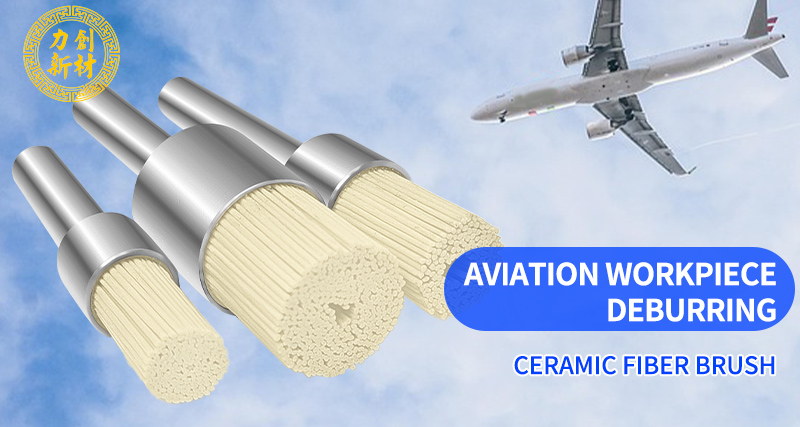The solution of ceramic fiber grinding brush in precision deburring of aviation parts
In the field of aviation manufacturing, the quality and reliability of parts are crucial. The burrs and knife marks on the surface of CNC precision machined parts such as engine blades, landing gear structures, and avionics housings need to be properly treated. The traditional manual polishing method may have room for efficiency improvement in some cases and may become a challenge for quality fluctuations and cost control.Does your company pay attention to the following aspects?
Quality stability: The effect of manual polishing may vary from person to person, seeking methods to ensure consistency of mass-produced parts.
Production efficiency: Explore the possibility of improving the efficiency of deburring processes to match modern processing rhythms.
Cost control: Focus on how to optimize the comprehensive cost of senior technician salaries and long working hours.
Operational risk: Pay attention to the risk of over grinding, scratching, or size deviation of parts that may be caused by manual operation.

Ceramic fiber characteristics: focus on solutions for aviation precision deburring
Ceramic fiber grinding brush is a precision tool designed specifically for industrial automation scenarios. Using ceramic bristles, it has a series of excellent characteristics:
Adaptive grinding: The bristles have good toughness and can adapt to the surface of the workpiece for adhesion, which helps to achieve uniform and precise grinding.
Cutting force and self sharpening: It has good cutting ability, and the brush wire micro blade can generate new cutting edges on its own after wear, providing support for stable grinding force.
Durability and high temperature resistance: With a long lifespan, it helps control the cost of individual consumables, and its high temperature resistance also adapts to high-speed dry cutting environments.
Integrated automation: realizing the process connection of "processing deburring"
Lichuang Ceramic Grinding Brush Solution focuses on integration. It can be loaded into the tool library of your existing CNC machining center, robot, or carving machine like a cutting tool.
Process optimization: In the machining program, the machine tool can be called to automatically process the parts according to the preset path.
Process parameterization: The speed, feed rate, and contact depth are controlled by the program, which helps to achieve process standardization and traceability of process quality.
Stable operation: Supports automated production and provides assistance in improving production capacity.
Value brought to you: Focusing on deburring and process optimization
Choosing Lichuang Ceramic Fiber Grinding Brush means you will be paying attention to:
Stability of product quality: Committed to controlling the surface roughness (Ra value) of aviation parts, supporting the improvement of deburring qualification rate to meet aviation standards.
Improvement in production efficiency: Deburring efficiency can be improved by matching it with the automation processing cycle, which is beneficial for shortening the delivery cycle.
Optimization of comprehensive costs: focus on saving labor costs, training costs, and rework costs. A longer lifespan is helpful in controlling individual unit costs.
Application scenarios and non-standard customization services

Materials: commonly used aviation metals such as aluminum alloy, titanium alloy, high-temperature alloy, stainless steel, etc.
Process: deburring, removing knife marks, removing oxide layer, polishing, optimizing surface texture.
Parts: engine blades, casing, frame, landing gear components, various types of shell components.
We focus on the diversity of aviation components. Therefore, Lichuang Grinding Brush provides non-standard customized services:
Form: Wheel brush, disc brush, brush, sleeve brush, etc.
Specifications: Diameter ranging from 6mm to 100mm, mesh size ranging from 60 to 3000.
Material and installation method: Customized options for brush formula and handle interface can be provided based on the workpiece material and processing requirements.
Explore more possibilities for precision manufacturing in aviation

























